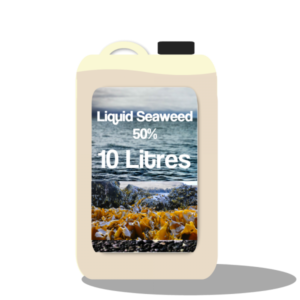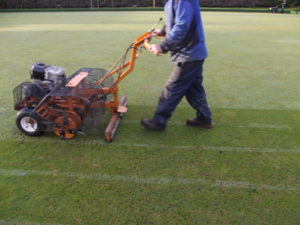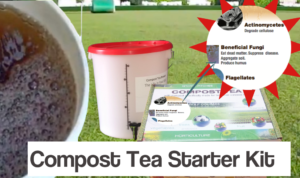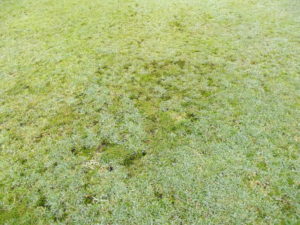Here are the recommended Greenkeeping tasks for January maintenance work for the Performance Bowling Greens Program.
Carrying out maintenance is of course dependent on the weather and underlying conditions. It’s important to keep an eye on the green as disease outbreaks can spread quickly when the weather turns mild again. I’m not averse to getting the sprayer out to spot treat these outbreaks with fungicide if totally necessary. Blanket sprays and preventative sprays have no place in the Performance Greens Program, they do much more harm than good, so vigilance is important.
Here’s what you should ideally be getting on with this month:
Mowing (8mm and at least one cut this month)
Mowing should go on through the winter months when conditions allow. It’s important to keep the height of cut at 7 or 8mm throughout the winter period and not to let the grass get too long at any point. Not only does longer grass encourage disease, by creating a slightly warmer microclimate at the green surface, it also become coarser in texture.
Disease Control and Prevention (get some more Liquid Seaweed on)
 Greens that are still in the recovery phase probably will see occasional outbreaks of fusarium when the weather is mild and you shouldn’t be too complacent about these if your green is still thatchy, annual meadow grass dominated and/or apt to stay wet and soft at the surface.
Greens that are still in the recovery phase probably will see occasional outbreaks of fusarium when the weather is mild and you shouldn’t be too complacent about these if your green is still thatchy, annual meadow grass dominated and/or apt to stay wet and soft at the surface.
Spot treatments of fungicide are still recommended if needed.
Seaweed Liquid with its plethora of trace elements and natural plant inoculants is an essential helper in the soil in deep winter. Trace elements like Copper and Zinc are known to help grass plants fend off attacks from fusarium and other fungal pathogens and its bio-stimulant properties helps to keep the microbe population growing and active.
Dew/worm cast removal
Worm casts left on the surface or smeared into the turf with the mower become ideal seedbeds for weeds next year, so try to make sure you clear them using a switch or brush frequently when conditions allow.
We have over 20 species of earthworm and only 3 surface feeding species’ produce surface casts. They feed surface detritus, taking it back underground, helping to recycle it into soil. If you leave debris on the surface you will get more casting worms, so try to keep it clean.
Worm killers are mostly unavailable now thankfully, as they did more harm than good, so it comes down to suppressing worm activity if they are causing a nuisance. Light applications of sulphur liquid or lentils (granules) can have a good suppressant effect.
Deep slit tining
 This is the most important job throughout the winter months for any bowling green. By deep, I mean 125 to 200mm, with tines that can get in to the upper limit of this range being preferred.
This is the most important job throughout the winter months for any bowling green. By deep, I mean 125 to 200mm, with tines that can get in to the upper limit of this range being preferred.
If you’re starting this kind of maintenance for the first time, the tines might not penetrate to this depth due to hard, compacted layers in the soil, but persevere with twice a month slit tining and you will notice a gradual and incremental improvement in the depth achieved.
Compost Tea
 If the weather is mild and the green is able to take a pass of the sprayer it’s a good time to brew up and get some soil rejuvenating compost tea on your turf, but an easier route to adding microbes in winter is to pop 2 BioTabs in the sprayer with Liquid Seaweed or Defender.
If the weather is mild and the green is able to take a pass of the sprayer it’s a good time to brew up and get some soil rejuvenating compost tea on your turf, but an easier route to adding microbes in winter is to pop 2 BioTabs in the sprayer with Liquid Seaweed or Defender.
Some very interesting research from Sweden here on how soil microbes don’t slack off in winter, so the more you can do to encourage a strong soil food web, the better.
Tank mix the compost tea or Biotabs with Liquid Seaweed for an additional bio-stimulant boost to keep plants
More on Compost Tea here.
Moss
 Moss has been a continuing problem for many readers. Moss takes hold in any space that is left in the sward, so until your green has fully transitioned into a healthy, perennial dominated one, this will continue to be a problem, albeit decreasingly so.
Moss has been a continuing problem for many readers. Moss takes hold in any space that is left in the sward, so until your green has fully transitioned into a healthy, perennial dominated one, this will continue to be a problem, albeit decreasingly so.
Killing it at this time of year is of course counter productive as it simply creates space for more moss to come after it. If you still have lively looking moss on your green you can keep it under control until spring using some Chelated Liquid Iron.
Looking forward to Spring
With the New Year well underway, many of you will have an eye on preparing for spring time work on the green. Why not make this the year you finally commit fully to achieving a Performance Bowling Green? The ebook that’s caused all the fuss is well under the price of a bag of fertiliser!…more here.
Soil Analysis with comprehensive report and ongoing support.
In addition to absorbing the message in Performance Bowling Greens, why not let me do a soil analysis for you. I’ll send you a kit to take the samples and also ask you some questions about the physical condition of your green, photos etc. Then I can write you a report with a suggested program for the spring start up and beyond. You can see the details of the soil analysis service here.
Questions Please
Of course as always, if you have any questions comments or problems, please feel free to drop me a line.

started on the performance green programme the first week in january 2017 after 2 winters of being plagued with fuserium
john has been very helpfull with any questions ive put to him along with hes posotive recomendations hes given us
done a soil sample for the green & john has set out a green maintainance programme for 2017 so we are looking forward to the season & the progress we have made
Hi John, my club is Astley Bridge Park Bowling Club in Bolton Lancs, and we have taken over responsibility for maintenance of the green from Bolton Council who have let it decline over the years into a sorry state. We have contracted this work out to a local company until we are in a position to take it over ourselves. Between us the green improved considerably last season and in the close season we have treated the moss, scarified, verti drained and fed the green. One growing concern is toad rush which is shooting up all over the green, we have been attempting to pick this out by hand but we are getting overwhelmed by it. I realise that once we start to mow the green regularly it might help to control it to some degree? Do you know of any agent that can be sprayed over the green that would kill and stop the re-growth of this pest? We are reluctant really to treat this with chemicals but it has become a big problem not just on our green but most park greens in Bolton and it is a lat resort.
Regards,
Paul Pover (Chairman ABPBC)
First thing is to say that following our eco-system thinking, something is making your green attractive to it and that is likely to be water being held at the surface by thatch or being prevented from draining by compaction.
The longer term plan then is to deal with the causes above.
Short term control is tricky as it can’t be sprayed out easily. Selective turf herbicides target Dicotyledonous (broadleaf) plants (usually shortened to “dicots”) which have a different physiology from Monocotyledonous (“monocots”) plants making the chemical safe to use on turf. Our grasses and the rushes are both monocots.
This leaves total herbicides (Glyphosate most likely) as the only chemical treatment available to use, which of course will also kill the grass if you are not careful with application. It can be brushed on to individual plants to try to limit the damage to the surrounding turf. I’m not sure how well it will work though as rushes have pretty tough, waxy leaves which might not take the chemical in too well.
My preferred option would be to plug out the worst of it (with a golf hole cutter) and deal with the underlying causes as an ongoing program.
Continued close mowing and scarifying (once you start spring preparation and grass growth is strong to aid recovery) should also put it under stress.
It will continue to return if you don’t identify and tackle the underlying cause though.
Have a look at this article for some tips on evaluating your green’s overall condition.
Any questions please let me know
Regards
John